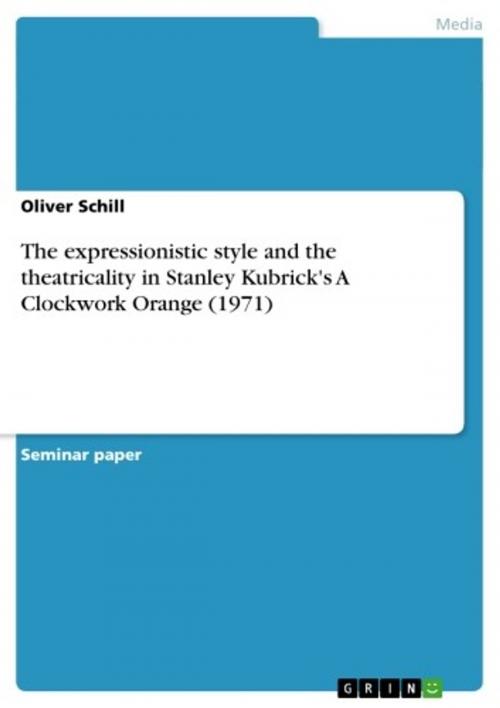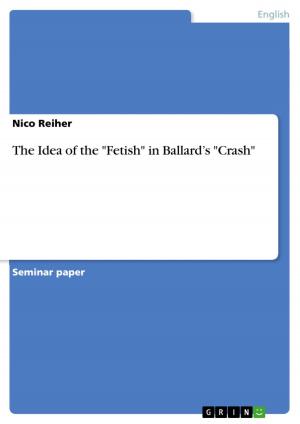The expressionistic style and the theatricality in Stanley Kubrick's A Clockwork Orange (1971)
Nonfiction, Entertainment, Performing Arts, Film| Author: | Oliver Schill | ISBN: | 9783638245234 |
| Publisher: | GRIN Publishing | Publication: | January 14, 2004 |
| Imprint: | GRIN Publishing | Language: | English |
| Author: | Oliver Schill |
| ISBN: | 9783638245234 |
| Publisher: | GRIN Publishing |
| Publication: | January 14, 2004 |
| Imprint: | GRIN Publishing |
| Language: | English |
Seminar paper from the year 2003 in the subject Film Science, grade: A, Concordia University Montreal (Mel Hoppenheim School Of Cinema), course: Stanley Kubrick Seminar, 7 entries in the bibliography, language: English, abstract: I don't know many filmmakers within their films are more pictorial structures than in the films of Stanley Kubrick. In the following essay, 'A Clockwork Orange' will be analyzed in terms of expressionism and theatricality. There not only the pictorial structure of the shots, but also the structure of the entire film is very interesting. The film has three main parts. The first one contains Alex's violent performance, the second is Alex's cure in jail and the third one is a kind of 'the empire strikes back'. Many scenes of the first part come again but in a mirrored version; now Alex is the victim. 'A Clockwork Orange represents the director's most complete experiment in presenting cinematic material in a subjective mode. (Falsetto, A Narrative and Stylistic Analysis, p. 90) Therefore other characteristics of the film, especially the 1st person voice over, or the point of view shots, are very important to mention in terms of creating this subjectivity. But one of the most important aspects in the film's subjectivity and theatricality is Alex's performance. Also the expressionist décor and lightning plays its important part in the film. The expressionistic style is deeply connected with elements of theatricality, in particular through the performance of the actors. Before analyzing 'A Clockwork Orange' concerning these elements, I will describe the development of the German expressionism and its historical context in general. After that I will point out the development of theatricality in cinema and in what relation theater stands to cinema.
Seminar paper from the year 2003 in the subject Film Science, grade: A, Concordia University Montreal (Mel Hoppenheim School Of Cinema), course: Stanley Kubrick Seminar, 7 entries in the bibliography, language: English, abstract: I don't know many filmmakers within their films are more pictorial structures than in the films of Stanley Kubrick. In the following essay, 'A Clockwork Orange' will be analyzed in terms of expressionism and theatricality. There not only the pictorial structure of the shots, but also the structure of the entire film is very interesting. The film has three main parts. The first one contains Alex's violent performance, the second is Alex's cure in jail and the third one is a kind of 'the empire strikes back'. Many scenes of the first part come again but in a mirrored version; now Alex is the victim. 'A Clockwork Orange represents the director's most complete experiment in presenting cinematic material in a subjective mode. (Falsetto, A Narrative and Stylistic Analysis, p. 90) Therefore other characteristics of the film, especially the 1st person voice over, or the point of view shots, are very important to mention in terms of creating this subjectivity. But one of the most important aspects in the film's subjectivity and theatricality is Alex's performance. Also the expressionist décor and lightning plays its important part in the film. The expressionistic style is deeply connected with elements of theatricality, in particular through the performance of the actors. Before analyzing 'A Clockwork Orange' concerning these elements, I will describe the development of the German expressionism and its historical context in general. After that I will point out the development of theatricality in cinema and in what relation theater stands to cinema.















